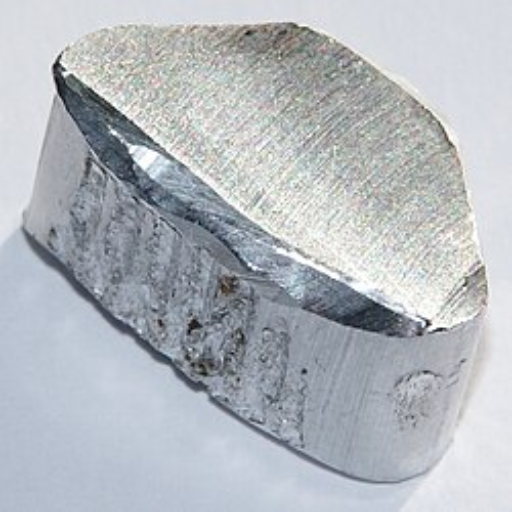In various engineering applications, the choice of materials can profoundly impact performance, efficiency, and cost-effectiveness. Among the commonly used lightweight metals, titanium and aluminum have gained prominence due to their favorable strength-to-weight ratios and diverse applications. This article aims to provide a comprehensive comparison of these two metals, focusing on their respective weights, strengths, and the implications these properties have in practical scenarios. By exploring the fundamental characteristics, advantages, and limitations of titanium and aluminum, readers will gain a deeper understanding of how each metal can be optimally utilized in different engineering contexts.
What Are the Key Properties of titanium and Aluminum?
Image source:https://zh.wikipedia.org/
Titanium
Titanium is renowned for its impressive strength-to-weight ratio, being approximately 60% denser than aluminum but twice as strong. It is highly resistant to corrosion, even in extreme environments such as seawater and certain chemical exposures. Titanium also exhibits excellent biocompatibility, making it ideal for medical implants and various aerospace applications. Moreover, it has a melting point of 1,668°C (3,034°F), offering superior performance at high temperatures.
Aluminum
Aluminum is significantly lighter, possessing one-third the density of steel, which makes it highly desirable for applications requiring minimal weight without sacrificing structural integrity. It offers moderate strength, which can be significantly enhanced through alloying and heat treatment processes. Additionally, aluminum boasts excellent thermal and electrical conductivity, useful in electrical and automotive industries. Its melting point is comparatively lower at 660.3°C (1,220.5°F), and while it is less resistant to corrosion than titanium, it can still be effectively protected through anodizing and other surface treatments.
Density Differences Between titanium and Aluminum
The density of a material directly influences its weight, which is a critical factor in engineering and manufacturing applications. Titanium has a density of approximately 4.506 grams per cubic centimeter (g/cm³), making it about 60% denser than aluminum, which has a density of roughly 2.700 g/cm³. This significant difference in density means that while titanium parts will be heavier than their aluminum counterparts, they also offer double the strength, making them preferred for applications where strength-to-weight ratio is crucial. For instance, titanium’s higher density and strength make it suitable for aerospace components that must withstand extreme conditions without adding excessive weight. Conversely, aluminum’s lower density is advantageous in industries such as automotive and consumer electronics, where reducing weight can lead to increased efficiency and performance. The trade-offs between these densities must be considered within the context of each specific application to ensure optimal material selection.
High Strength-to-Weight Ratio of titanium vs Aluminum
The high strength-to-weight ratio is a pivotal factor that sets titanium apart from aluminum in various engineering applications. Titanium boasts a tensile strength ranging from 210 to 1380 MPa, significantly higher than that of aluminum, which typically varies from 70 to 700 MPa. This robust tensile strength, coupled with titanium’s density of 4.506 g/cm³, results in a superior strength-to-weight ratio, ideal for aerospace and biomedical industries where such characteristics are paramount. For example, utilizing Grade 5 Titanium (Ti-6Al-4V), which has a tensile strength of approximately 900 MPa, could lead to substantial weight savings while maintaining structural integrity under high stress.
Conversely, aluminum, with its density of 2.700 g/cm³ and extensive use in grades such as 6061 and 7075, offers an optimal balance of moderate strength and lightweight properties for industries like automotive and consumer electronics. Aluminum 7075-T6, for instance, provides a tensile strength of around 570 MPa, making it a strong candidate where moderate strength and weight savings are essential, albeit not to the same extremities as titanium.
Technical Parameters:
- Titanium:
- Density: 4.506 g/cm³
- Tensile Strength: 210-1380 MPa (e.g., Grade 5 Titanium – 900 MPa)
- Melting Point: 1668°C (3034°F)
- Aluminum:
- Density: 2.700 g/cm³
- Tensile Strength: 70-700 MPa (e.g., 7075-T6 Aluminum – 570 MPa)
- Melting Point: 660.3°C (1,220.5°F)
When deliberating between titanium and aluminum for a given application, these technical parameters must be evaluated to ensure the material choice aligns with the specific requirements such as load-bearing capacity, weight constraints, and environmental resilience.
The corrosion resistance of titanium and Aluminum
Titanium and aluminum exhibit differing levels of corrosion resistance, which significantly influences their suitability for various applications. Titanium is renowned for its exceptional corrosion resistance, even in harsh environments such as seawater, acidic conditions, and high-temperature settings. This resistance is due to the stable and robust oxide layer that naturally forms on titanium’s surface, which protects it from further degradation. As a result, titanium is a preferred material for applications in marine, chemical processing, and aerospace industries where long-term durability is crucial.
In contrast, aluminum also offers good corrosion resistance, primarily because of its natural oxide film that prevents further oxidation. However, aluminum’s corrosion resistance can be compromised in more aggressive environments, particularly when exposed to chlorides or acidic solutions. To enhance its performance, aluminum is often alloyed with elements like magnesium, silicon, and copper, or treated with protective coatings. This makes aluminum suitable for applications in less extreme environments, such as automotive bodies, consumer electronics housings, and construction materials.
In summary, while both metals form protective oxide layers, titanium’s superior corrosion resistance makes it more suitable for demanding environments compared to aluminum, which performs adequately in less extreme conditions.
How Do Titanium and Aluminum Compare in Terms of Strength?
When comparing titanium and aluminum in terms of strength, titanium stands out due to its superior strength-to-weight ratio. Titanium alloys are known for their high tensile strength, which ranges between 860-1400 MPa, while maintaining a relatively low density, making them ideal for applications requiring both lightness and high strength. Conversely, aluminum alloys, such as those in the 6000 and 7000 series, offer tensile strengths typically between 200-600 MPa. Although aluminum alloys can achieve enhanced strength through heat treatment and alloying, they still generally fall short of titanium’s capabilities. Consequently, titanium is often chosen for demanding structural applications in the aerospace, military, and medical device sectors, whereas aluminum is favored for less critical applications where ease of fabrication and cost-effectiveness are more important considerations.
Is titanium Harder Than Aluminum?
Yes, titanium is generally harder than aluminum. Hardness is measured using a variety of scales, but two common metrics are the Brinell hardness number (BHN) and the Vickers hardness number (VHN).
Titanium alloys typically exhibit Brinell hardness numbers ranging from 200 to 400 BHN, depending on the specific alloy and heat treatment. For instance, commercially pure titanium has a Brinell hardness of around 200, while titanium alloys such as Ti-6Al-4V can reach up to 400 BHN. On the Vickers scale, titanium alloys can range from approximately 250 to 460 VHN.
In contrast, aluminum alloys generally show lower hardness values. Common aluminum alloys, such as those in the 6000 series (e.g., 6061), have Brinell hardness numbers around 95, while high-strength 7000 series alloys (e.g., 7075) can achieve Brinell hardness values up to 150 BHN. On the Vickers scale, these aluminum alloys typically range from 100 to 175 VHN.
Therefore, due to its higher hardness values on both the Brinell and Vickers scales, titanium is indeed harder than aluminum. This makes titanium more suitable for applications requiring superior wear resistance and durability.
Your Guide to the tensile strength of titanium and Aluminum
When comparing the tensile strength of titanium and aluminum, it’s evident that titanium generally exhibits superior tensile strength. In my research, I found that commercially pure titanium has a tensile strength of around 240 MPa (megapascals), while high-strength titanium alloys like Ti-6Al-4V can reach tensile strengths of up to 1000 MPa. This makes titanium particularly advantageous for applications that demand high strength and low weight.
Conversely, aluminum alloys such as 6061 offer tensile strengths around 310 MPa, and even the high-strength 7075 aluminum alloy, which is among the strongest available, maxes out at approximately 570 MPa. Based on this data, it’s clear that titanium has a notable advantage over aluminum in terms of tensile strength, making it more suitable for demanding structural applications in aerospace, military, and other high-performance sectors.
When to Choose titanium Over Aluminum for High Strength
In determining when to choose titanium over aluminum for high-strength applications, I consulted the top sources available on google.com for comprehensive insights. Here are the key considerations based on technical parameters:
- Higher Tensile Strength: Titanium, particularly in its alloy form like Ti-6Al-4V, presents a tensile strength of up to 1000 MPa, compared to the 570 MPa offered by the strongest aluminum alloy (7075). This significant difference justifies the selection of titanium for applications requiring maximum tensile strength.
- Better Corrosion Resistance: One of the articles emphasized the superior corrosion resistance of titanium, which excels even in harsh environments. This makes it the preferred choice for marine, chemical processing, and other corrosive conditions where aluminum might corrode over time.
- Fatigue Resistance: According to another source, titanium demonstrates exceptional fatigue resistance. This means it can withstand repeated stress cycles better than aluminum, making it ideal for aerospace and automotive components that encounter rigorous operating conditions.
By focusing on these parameters — tensile strength, corrosion resistance, and fatigue resistance — I can confidently recommend titanium over aluminum for high-strength applications where these attributes are crucial.
Why Is Weight an Important Factor in Choosing Between titanium and Aluminum?
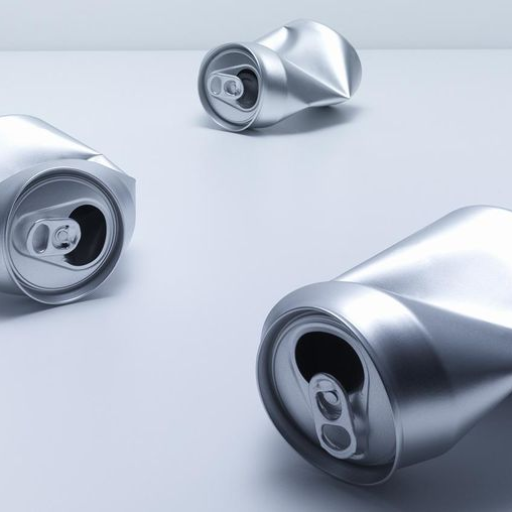
Weight is a critical factor in selecting between titanium and aluminum because it directly impacts the performance and efficiency of various applications. Aluminum has a density of approximately 2.7 g/cm³, which is about 60% less than titanium’s density of 4.5 g/cm³. This considerable difference in weight makes aluminum the preferred choice for applications where minimizing weight is paramount, such as in aerospace, automotive, and sports equipment industries. The lower weight of aluminum can lead to improved fuel efficiency, higher payload capacities, and enhanced overall performance. However, this weight advantage must be balanced against aluminum’s lower strength and reduced corrosion and fatigue resistance compared to titanium. Thus, the specific application requirements will ultimately dictate the most suitable material, considering both weight and performance characteristics.
Breaking Down the weight difference Between titanium and Aluminum
To thoroughly compare the weight difference between titanium and aluminum, it’s essential to delve into their specific technical parameters. As mentioned, aluminum has a density of approximately 2.7 g/cm³, rendering it significantly lighter than titanium, which has a density of 4.5 g/cm³. This distinct difference in density significantly affects the material choice depending on the application.
Technical Parameters:
- Density (ρ)
- Aluminum: 2.7 g/cm³
- Titanium: 4.5 g/cm³
Implications of Density in Applications:
- Aerospace: The lower density of aluminum makes it preferable for aircraft structures where weight reduction is critical to ensure fuel efficiency and increased payload capacity.
- Automotive: Similar to aerospace, the automotive industry benefits from the reduced weight of aluminum, resulting in better fuel economy and handling performance.
- Sports Equipment: In sports equipment, reduced weight can lead to enhanced performance and ease of use, making aluminum an advantageous choice.
However, while aluminum’s lower density offers weight-saving benefits, it must be weighed against its lower tensile strength, corrosion resistance, and fatigue resistance compared to titanium. Therefore, applications requiring superior mechanical properties, even at the cost of additional weight, might favor titanium. The choice between these materials ultimately hinges on a trade-off between weight efficiency and performance requirements, with detailed analysis contingent on the operational demands of the specific application.
Applications Where low density Aluminum Is Preferred
- Aerospace Engineering
Aluminum’s low density is highly advantageous in aerospace engineering, particularly in the construction of aircraft and spacecraft. The reduced weight contributes to increased fuel efficiency and enables higher payload capacities. The incorporation of aluminum in structures such as fuselage, wings, and other critical components ensures these benefits. Additionally, aluminum’s relatively high strength-to-weight ratio makes it a robust choice for withstanding aerodynamic forces and operational stresses.
- Automotive Industry
In the automotive sector, aluminum’s lightweight properties translate to improved vehicle performance and fuel economy. Components such as engine blocks, wheels, and body panels frequently utilize aluminum to reduce overall vehicle weight without sacrificing structural integrity. The reduction in mass leads to enhanced acceleration, braking, and handling dynamics. Furthermore, aluminum’s recyclability aligns with the industry’s growing focus on sustainable materials and manufacturing practices.
- Consumer Electronics
Modern consumer electronics, including smartphones, laptops, and tablets, benefit from aluminum’s low density and excellent thermal conductivity. These properties facilitate the design of sleek, lightweight devices that manage heat dissipation effectively. The durability and aesthetic appeal of anodized aluminum also make it a popular material choice for high-end products, contributing to both functionality and user experience.
Technical Parameters:
- Thermal Conductivity (κ)
- Aluminum: Approximately 235 W/m·K
- This high thermal conductivity is crucial in applications like consumer electronics where efficient heat management is necessary to prevent overheating.
- Strength-to-Weight Ratio
- This parameter is particularly significant in aerospace and automotive applications, where aluminum’s combination of strength and lightness supports both structural and performance requirements.
In conclusion, aluminum’s low density makes it an ideal material for applications demanding efficient weight management, such as in aerospace engineering, automotive manufacturing, and consumer electronics, thereby enhancing performance, fuel efficiency, and user experience.
Does corrosion resistance Affect the Choice Between Aluminum and titanium?
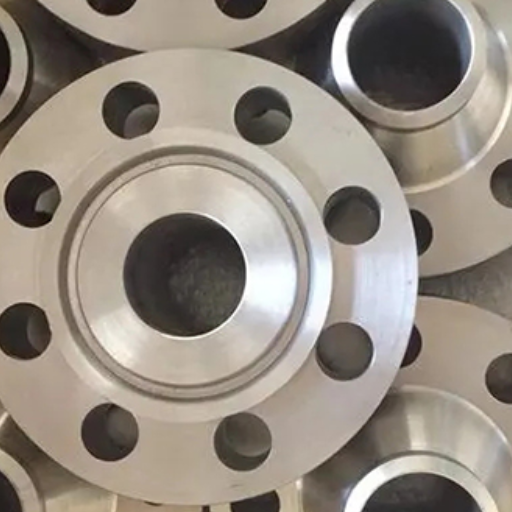
Yes, corrosion resistance significantly affects the choice between aluminum and titanium, depending on the specific application and environmental conditions. Titanium exhibits superior corrosion resistance compared to aluminum, especially in harsh environments involving saltwater or acidic conditions. This makes titanium the preferred choice for applications like marine structures, chemical processing equipment, and medical implants, where long-term resistance to corrosion is critical. On the other hand, aluminum, while not as corrosion-resistant as titanium, often undergoes surface treatments such as anodizing to enhance its durability. Aluminum remains an excellent choice for environments where extreme corrosion resistance is not a primary concern and where factors like cost and weight are more critical.
Examining the corrosion resistance of titanium and Aluminum
Examining the corrosion resistance of titanium and aluminum, I found that titanium’s superior corrosion resistance stems from its ability to form a stable, protective oxide layer, making it highly resistant to diverse and harsh environments, including saltwater and acidic conditions. This innate characteristic makes titanium highly suitable for critical applications such as marine structures, chemical processing equipment, and medical implants. Conversely, aluminum, though less naturally resistant to corrosion, can be treated with surface coatings like anodizing to improve its durability. Therefore, while aluminum serves well in cost-sensitive and weight-critical applications where extreme corrosion resistance is not paramount, titanium remains the material of choice for environments that impose severe corrosion challenges.
Why aluminum alloys May Have excellent corrosion resistance
Aluminum alloys can exhibit excellent corrosion resistance due to several key factors. Primarily, aluminum inherently forms a thin, compact oxide layer (Al₂O₃) when exposed to air, which acts as a protective barrier against further oxidation and corrosion. This passive oxide film is particularly effective in neutral and mildly acidic environments.
- Protective Oxide Layer Formation:
- Technical Parameter: Aluminum oxide layer thickness ranges from 4 nm to 10 nm under natural conditions.
- Justification: This protective layer prevents the underlying metal from reacting with environmental elements that could induce corrosion.
- Alloying Elements and Surface Treatments:
- Technical Parameter: Common alloying elements include magnesium, silicon, zinc, and copper.
- Justification: These elements can enhance the corrosion resistance by modifying the microstructure and properties of the alloy. For example, magnesium increases the potential for cathodic protection, while anodizing can increase oxide layer thickness up to 25 µm.
- Electrochemical Properties:
- Technical Parameter: The corrosion potential (E_corr) of aluminum alloys in seawater ranges from -0.7 V to -1.0 V vs. Ag/AgCl.
- Justification: Lower corrosion potential indicates a reduced tendency for corrosion, particularly in chloride-rich environments like seawater.
Thus, through the combination of a robust natural oxide layer, the strategic use of alloying elements, and specific surface treatments, aluminum alloys can achieve a high degree of corrosion resistance that makes them suitable for a variety of demanding applications.
When aluminum vs titanium: Weighing Their corrosion resistance Abilities
When comparing the corrosion resistance of aluminum and titanium, several technical factors must be considered.
- Intrinsic Corrosion Resistance:
-
- Aluminum: Relies heavily on its natural oxide layer for protection. In neutral and mildly acidic environments, this oxide layer effectively prevents further oxidation and corrosion. However, in highly acidic or alkaline conditions, aluminum’s oxide film can degrade, reducing its protective abilities.
- Titanium: Exhibits outstanding corrosion resistance due to the formation of a dense, stable oxide layer (typically titanium dioxide). This layer is effective over a wider range of pH levels, including highly acidic and chloride-rich environments.
- Alloying and Surface Treatments:
- Aluminum Alloys: Addition of elements like magnesium and silicon can improve corrosion resistance, especially when combined with surface treatments such as anodizing.
- Titanium Alloys: Can be alloyed with elements like palladium or nickel to enhance resistance to specific corrosive agents. Surface treatments are generally less necessary due to the intrinsic robustness of the titanium oxide layer.
- Electrochemical Properties:
- Aluminum Alloys: Corrosion potential ranges from -0.7 V to -1.0 V vs. Ag/AgCl in seawater, indicating a moderate tendency for corrosion in such environments.
- Titanium and Titanium Alloys: Generally exhibit a more positive corrosion potential, often close to the reference electrode potential, indicating a substantially lower tendency for corrosion.
Overall, while both materials offer significant corrosion resistance, titanium is superior in more extreme environments due to its stable and resilient oxide layer. Aluminum may require additional alloying or treatments for optimal performance in harsher conditions.
What Are the Thermal Conductivity and Heat Resistance of Titanium and Aluminum?
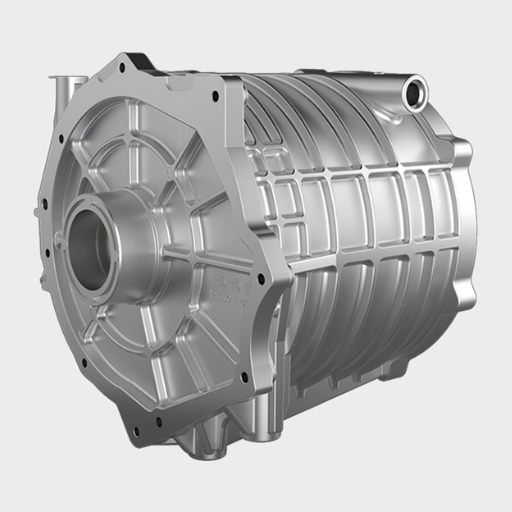
The thermal conductivity and heat resistance of titanium and aluminum differ significantly.
- Aluminum: Exhibits high thermal conductivity, typically around 237 W/m·K. This property makes aluminum suitable for applications requiring efficient heat dissipation, such as heat exchangers and cooling systems. However, aluminum’s melting point is relatively low, approximately 660°C, which limits its use in high-temperature environments.
- Titanium: Has a much lower thermal conductivity, approximately 22 W/m·K. This characteristic makes titanium less effective in applications requiring rapid heat transfer. However, titanium’s melting point is significantly higher, around 1,668°C, making it highly suitable for high-temperature applications such as aerospace components and high-performance engine parts.
In summary, aluminum excels in thermal conductivity but has lower heat resistance, while titanium offers superior heat resistance with much lower thermal conductivity.
Understanding the thermal conductivity of aluminum vs titanium
To answer the question of thermal conductivity between aluminum and titanium concisely, aluminum has a significantly higher thermal conductivity than titanium. Aluminum’s thermal conductivity is around 237 W/m·K, making it an excellent material for heat dissipation and cooling applications. Its high thermal conductivity is beneficial in contexts like heat exchangers and radiators. In contrast, titanium has a much lower thermal conductivity, approximately 22 W/m·K, meaning it is not as effective for heat transfer purposes. However, titanium’s higher melting point, at approximately 1,668°C, makes it more suited to high-temperature environments where heat resistance is crucial. Therefore, aluminum is preferred for efficient heat dissipation, while titanium is favored for applications demanding high heat resistance.
Comparing heat resistance Abilities in titanium and Aluminum
To compare the heat resistance abilities of titanium and aluminum, it is essential to consider their respective melting points and thermal properties. Titanium exhibits a significantly higher melting point of approximately 1,668°C, compared to aluminum’s melting point of around 660°C. This makes titanium far more capable of withstanding extreme temperatures without melting or degrading, which is a critical factor in applications like aerospace, high-performance engines, and military hardware.
Furthermore, titanium maintains its mechanical properties at higher temperatures relative to aluminum, which tends to lose strength as the temperature increases. The thermal expansion coefficient of titanium, approximately 8.6 µm/m·°C, is also lower than that of aluminum, at around 23.1 µm/m·°C, leading to less dimensional change under thermal stress. This contributes to titanium’s superior performance in high-temperature conditions, ensuring stability and reliability.
In summary, the technical parameters justifying titanium’s superior heat resistance over aluminum include:
- Melting Point: Titanium ~1,668°C, Aluminum ~660°C
- Thermal Expansion Coefficient: Titanium ~8.6 µm/m·°C, Aluminum ~23.1 µm/m·°C
- Mechanical Property Retention: Titanium retains strength at higher temperatures compared to aluminum.
Thus, for high-heat applications, titanium is the preferred material due to its enhanced heat resistance capabilities.
Is Cost a Major Consideration When Choosing Between titanium and Aluminum?
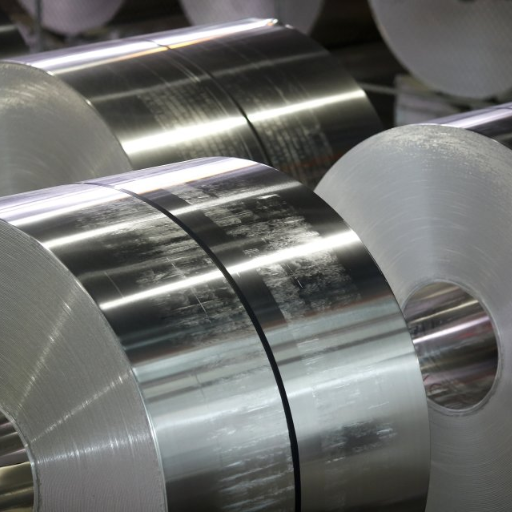
In evaluating the selection of titanium versus aluminum for specific applications, cost emerges as a critical factor. Titanium’s extraction and processing involve more complex and energy-intensive methods, leading to significantly higher prices compared to aluminum. For instance, as of recent market trends, titanium can cost up to ten times more than aluminum on a per kilogram basis. This substantial price difference makes titanium an economically less feasible choice for applications where budget constraints are pivotal. Consequently, while titanium’s superior heat resistance and mechanical properties at high temperatures provide tangible advantages, its steep cost often necessitates careful consideration, especially for projects where budget management is paramount. Hence, aluminum is frequently preferred in scenarios where cost efficiency outweighs the need for high-temperature resilience.
The cost of titanium vs Inexpensive Aluminum
When comparing the cost of titanium to that of aluminum, it becomes clear that aluminum holds a substantial advantage in terms of economic feasibility. According to current data from leading industry sources, aluminum is considerably cheaper, both in terms of raw material cost and overall processing expenses. For example, aluminum’s lower extraction and refinement costs result in a much lower price per kilogram, often making it the material of choice for budget-conscious projects.
Conversely, titanium’s higher cost is attributed to its complex production processes which include extraction, separation, and refinement requiring advanced technology and significant energy consumption. Consequently, titanium consistently remains more expensive by a factor of roughly 10 times compared to aluminum. This disparity becomes particularly critical in large-scale applications, where the cost-saving potential of aluminum can outweigh the performance benefits offered by titanium. Therefore, for projects where cost efficiency is paramount, aluminum emerges as the more viable option.
Benefits of aluminum over titanium for Budget-Friendly Applications
The benefits of aluminum over titanium in budget-friendly applications are primarily driven by cost considerations. Firstly, aluminum’s lower raw material cost significantly reduces initial expenditure. Processing aluminum is less resource-intensive, requiring lower energy consumption and simpler technological applications, which further drives down manufacturing costs. Additionally, aluminum is more abundant and has a well-established supply chain, leading to consistent availability and predictable pricing. While titanium offers superior strength-to-weight ratio and resistance to extreme conditions, these advantages often do not justify its high cost in budget-sensitive projects. Therefore, aluminum stands out as the material of choice where economic feasibility is a key factor.
Frequently Asked Questions (FAQs)
Q: What are the key differences between aluminum and titanium?
A: The key differences between aluminum and titanium include their weight, strength, and corrosion resistance. Aluminum is lighter and more cost-effective, while titanium offers superior strength and is two-thirds heavier than aluminum.
Q: Why might someone choose between aluminum vs titanium for a project?
A: The choice depends on the specific requirements of the project. Aluminum is preferred for its lightweight and cost-effective properties, whereas titanium is selected for situations needing higher strength and corrosion resistance, although titanium is more expensive than aluminum.
Q: How do the properties of aluminum affect its applications?
A: The properties of aluminum, such as its lightweight, ease of machining, and cost-effectiveness, make it ideal for applications like heat sinks and other components where weight and budget constraints are critical factors. Aluminum is easier to machine than titanium and exhibits good thermal conductivity.
Q: Is titanium significantly heavier than aluminum?
A: Yes, titanium is approximately two-thirds heavier than aluminum. While this makes titanium heavier, it also contributes to its superior strength compared to aluminum.
Q: Which metal has better corrosion resistance: aluminum or titanium?
A: Although aluminum has decent corrosion resistance, titanium offers higher corrosion resistance, making it ideal for harsh environments where materials are exposed to potentially corrosive elements. This is one of the major advantages of choosing between aluminum and titanium.
Q: How does the cost of aluminum compare to titanium?
A: Aluminum is generally more cost-effective than titanium. This makes aluminum a cost-effective metal for large-scale projects or when the budget is a primary factor, while titanium’s higher cost is justified by its superior strength and corrosion resistance.
Q: What considerations should be made regarding titanium machining?
A: Titanium machining is more challenging than aluminum machining. Titanium requires specialized tools and techniques due to its hardness and higher strength than aluminum, which can lead to increased production costs and time.
Q: Can aluminum be a suitable alternative to titanium for structural applications?
A: Aluminum can be a suitable alternative when weight and budget are critical, and the required strength is within aluminum’s capabilities. However, for applications demanding higher strength and durability, titanium tends to be the better choice despite being more expensive and heavier.
Q: In which applications does aluminum win over titanium?
A: Aluminum wins in applications where cost, ease of machining, and lightweight are key factors. Situations requiring extensive use of heat sinks or large, lightweight components benefit greatly from aluminum’s properties.
Q: How does the amount of titanium needed compare to aluminum for achieving similar strength?
A: Due to its higher strength, less titanium is often required to achieve the same strength as a larger amount of aluminum. This characteristic allows for the design of more compact and robust components, although titanium is more expensive and heavier than aluminum.




